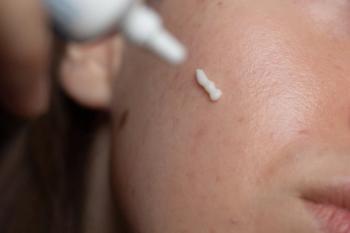
Targeted TYK2 Blockade for PsO Without JAK1/2/3 Impact
Key Takeaways
- Zasocitinib is a selective TYK2 inhibitor, offering a distinct profile compared to traditional JAK inhibitors, with minimal off-target effects and a favorable safety profile.
- Demonstrates high selectivity and potency in inhibiting TYK2-mediated pathways, with no measurable inhibition of JAK1/2/3 even at high concentrations.
Zasocitinib emerges as a promising oral therapy for psoriasis and psoriatic arthritis, showcasing superior selectivity and safety compared to traditional JAK inhibitors.
Zasocitinib (TAK-279) has emerged as a leading investigational oral therapy in the treatment landscape for immune-mediated inflammatory diseases (IMIDs), including psoriasis and psoriatic arthritis. Developed as a highly selective allosteric inhibitor of tyrosine kinase 2 (TYK2),zasocitinib represents a potential next-generation treatment with a distinct pharmacologic profile compared to traditional Janus kinase (JAK) inhibitors.1
TYK2 plays a critical role in signal transduction of key cytokines such as interleukin-23 (IL-23), IL-12, and type I interferons, all of which are implicated in the pathophysiology of IMIDs. Unlike JAK1/2/3, which are often inhibited simultaneously by earlier JAK inhibitors and associated with off-target effects including serious infections, cardiovascular events, and hematologic abnormalities, TYK2 offers a more refined target. This specificity may allow for potent therapeutic efficacy with a more favorable safety profile.
A new study published in the Journal of Investigative Dermatology offers the most comprehensive pharmacological analysis of zasocitinib to date. Using a combination of biochemical binding assays, human whole blood signaling assays, and simulated pharmacokinetic modeling, researchers evaluated zasocitinib’s selectivity and potency relative to deucravacitinib (the only FDA-approved TYK2 inhibitor) and several licensed JAK inhibitors, including baricitinib, tofacitinib, and upadacitinib.
Zasocitinib demonstrated remarkable biochemical selectivity, binding the TYK2 Janus homology 2 (JH2) domain with an inhibitory constant (Ki) of 0.0087 nM. This represented over a 1 million-fold selectivity over JAK1 JH2, far surpassing the 87-fold selectivity shown by deucravacitinib. In human whole blood assays, zasocitinib potently inhibited TYK2-mediated pathways—such as IL-23-pSTAT3, type I IFN-pSTAT3, and IL-12-pSTAT4—with half-maximal inhibitory concentrations (IC₅₀s) ranging from 21.6 to 57.0 nM. In contrast, there was no measurable inhibition of JAK1/2/3 even at concentrations as high as 30,000 nM.
Pharmacokinetic simulations at a clinically relevant dose (30 mg once daily) further underscored the potential clinical advantage of zasocitinib. The drug maintained plasma concentrations above the TYK2 IC90 threshold for a full 24-hour period, suggesting strong and sustained target engagement. This level of inhibition was not observed with deucravacitinib at its approved 6 mg daily dose, which only surpassed the IC50 for IL-23-pSTAT3 for 4.8 hours per dosing interval. Notably, none of the tested doses of deucravacitinib or JAK inhibitors achieved 24-hour IC90 coverage without impacting JAK1/2/3 signaling.
As previously reported by Dermatology Times, clinical trial results reinforce these mechanistic findings. In a phase 2b trial, zasocitinib achieved statistically significant improvements in Psoriasis Area and Severity Index (PASI) scores, with 33% of patients on the 30 mg dose achieving complete skin clearance (PASI 100) by week 12. In psoriatic arthritis, patients receiving the highest dose experienced rapid improvements in both skin and joint symptoms, with meaningful responses observed as early as 2 weeks into therapy. These benefits were attained without increased rates of serious infections, cardiovascular events, or thromboembolic complications—concerns typically associated with broader JAK inhibition.2-3
Zasocitinib’s extended half-life (16.5 to 30.7 hours) compared to deucravacitinib (10 hours) contributes to its capacity for sustained inhibition and once-daily dosing convenience. The absence of JAK1/2/3 inhibition suggests a safety profile potentially superior to that of both TYK2 orthosteric inhibitors and JAK inhibitors.
Ongoing phase 3 clinical trials (
References
- Mehrotra S, Sano Y, Halkowycz P, et al. Pharmacological characterization of zasocitinib (TAK-279): An oral, highly selective and potent allosteric TYK2 inhibitor. J Invest Dermatol. Published online May 27, 2025. doi:10.1016/j.jid.2025.05.014
- Gooderham M, Bunick C, Kircik L, et al. Zasocitinib (TAK-279) displays high TYK2 inhibition and no inhibition of JAK 1/3 versus licensed inhibitors. Presented at: the European Society for Dermatological Research Meeting; September 4-7, 2024; Lisbon, Portugal.
- Armstrong AW, Gooderham M, Lynde C, et al. Tyrosine kinase 2 inhibition with zasocitinib (TAK-279) in psoriasis: A randomized clinical trial. JAMA Dermatol. Published online August 21, 2024. doi:10.1001/jamadermatol.2024.2701
Newsletter
Like what you’re reading? Subscribe to Dermatology Times for weekly updates on therapies, innovations, and real-world practice tips.


















